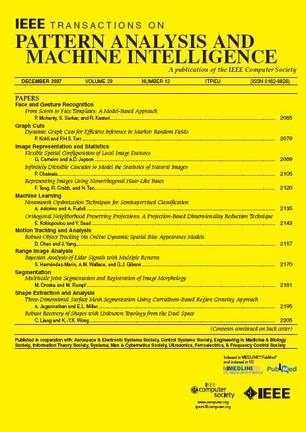Layer-Adaptive-Augmentation-Based Graph Contrastive Learning With Feature Decorrelation.
IF 18.6
1区 计算机科学
Q1 COMPUTER SCIENCE, ARTIFICIAL INTELLIGENCE
IEEE Transactions on Pattern Analysis and Machine Intelligence
Pub Date : 2025-10-07
DOI:10.1109/tpami.2025.3618329
引用次数: 0
Abstract
Graph Contrastive Learning (GCL) methods typically leverage augmentation techniques to generate different graph views for comparison, thereby learning corresponding representations for graph-related tasks in label-scarce scenarios. However, existing GCL methods suffer from two primary limitations: 1) they use predefined or one-time perturbations for augmentation, ignoring adaptive noise injection during forward propagation and thus leading to suboptimal model robustness; 2) their contrast mechanisms mainly focus on the agreement of inter-graph representations while neglecting the dimensional feature redundancy within intra-graph representations. To solve these issues, we propose Layer-adaptive-augmentation-based Graph Contrastive Learning with feature Decorrelation (LGCLD). Firstly, the designed layer- wise adaptive augmentation method performs dynamic perturbations while maintaining the semantic similarity between augmented and original graphs, which can improve model robustness. Secondly, we introduce an Agreement-Decorrelation loss (AD loss) that simultaneously optimizes the agreement between graph-level representations and the feature correlation among different dimensions within each graph-level representation, promoting the model to learn informative and non-redundant graph-level representations. Furthermore, we analyze the reasonableness of AD loss through the graph information bottleneck principle. Experiments on various-domain graph datasets demonstrate that LGCLD achieves better or competitive performance compared with a series of state-of-the-art baselines.基于层自适应增强的特征去相关图对比学习。
图对比学习(GCL)方法通常利用增强技术生成不同的图视图进行比较,从而学习标签稀缺场景中与图相关的任务的相应表示。然而,现有的GCL方法存在两个主要局限性:1)它们使用预定义或一次性扰动进行增强,忽略了前向传播过程中的自适应噪声注入,从而导致模型鲁棒性次优;2)它们的对比机制主要关注图间表示的一致性,而忽略了图内表示的维度特征冗余。为了解决这些问题,我们提出了基于层自适应增强的特征去相关图对比学习(LGCLD)。首先,设计的分层自适应增强方法在保持增强图与原始图的语义相似度的同时进行动态扰动,提高了模型的鲁棒性;其次,我们引入了一种协议-去相关损失(AD loss)算法,该算法可以同时优化图级表示之间的一致性和每个图级表示内不同维度之间的特征相关性,从而促进模型学习信息丰富且无冗余的图级表示。在此基础上,利用图信息瓶颈原理分析了AD损耗的合理性。在不同领域图数据集上的实验表明,与一系列最先进的基线相比,LGCLD取得了更好的或有竞争力的性能。
本文章由计算机程序翻译,如有差异,请以英文原文为准。
求助全文
约1分钟内获得全文
求助全文
来源期刊
CiteScore
28.40
自引率
3.00%
发文量
885
审稿时长
8.5 months
期刊介绍:
The IEEE Transactions on Pattern Analysis and Machine Intelligence publishes articles on all traditional areas of computer vision and image understanding, all traditional areas of pattern analysis and recognition, and selected areas of machine intelligence, with a particular emphasis on machine learning for pattern analysis. Areas such as techniques for visual search, document and handwriting analysis, medical image analysis, video and image sequence analysis, content-based retrieval of image and video, face and gesture recognition and relevant specialized hardware and/or software architectures are also covered.

 求助内容:
求助内容: 应助结果提醒方式:
应助结果提醒方式:


